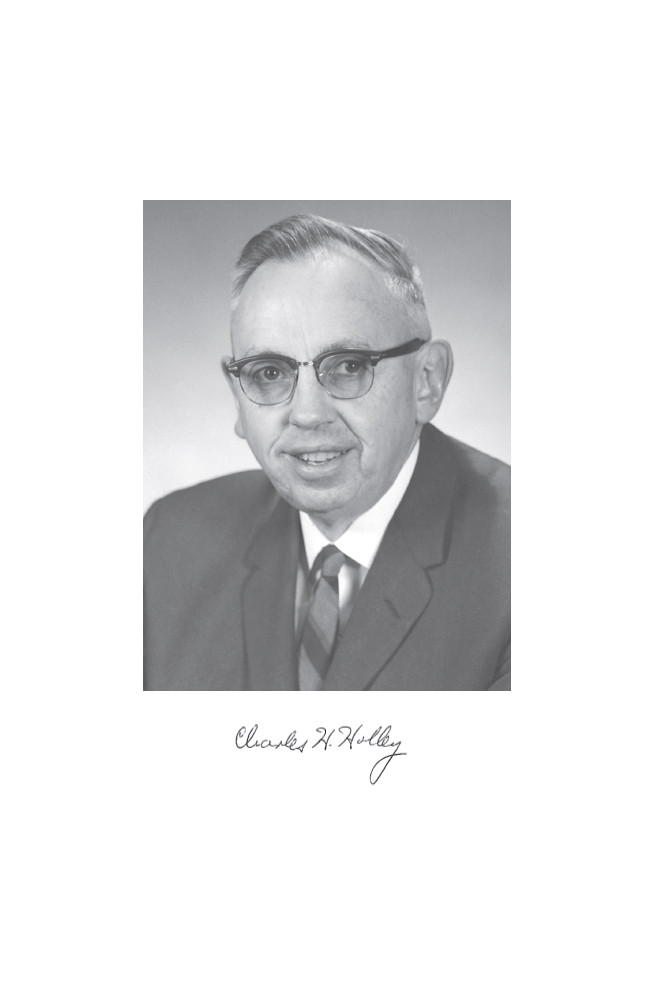
1919–2012
Elected in 1976
“Pioneering contributions to the evolution of turbine-generator design.”
BY JAMES M. FOGARTY
SUBMITTED BY THE NAE HOME SECRETARY
CHARLES HENRY HOLLEY, active throughout his career in the electric power industry, died on October 9, 2012, at the age of 93.
Chuck, as people knew him, was born in Pittsburgh on April 15, 1919, and raised in nearby Ford City. He attended Duke University and graduated in 1941 with a degree in electrical engineering. A tall man for the times, he was recruited by the university to play basketball and was the starting center for the Duke Blue Devils. A lifelong Duke fan, he returned to campus several times in his 70s and 80s to play in the annual Duke alumni basketball games.
Upon graduation, he joined the General Electric Company’s Test Program with assignments in Lynn (Massachusetts) and Philadelphia before taking a position as a field engineer in Pittsburgh. In 1945 he came to Schenectady and joined the Generator Engineering Section, which was responsible for the design and development of the large steam turbine–driven generators used for electric power generation.
In the early 1950s Chuck, together with Charles Kilbourne, also of GE, developed the concept of cooling the high-voltage AC windings of power generators with liquid (oil) flowing in the copper conductors themselves. This approach allowed a step change in power density that all other manufacturers
have since copied. The first unit, put into operation in 1956 at the Cleveland Electric Illuminating Eastlake plant, remains in service today.
In 1962 Chuck was promoted to manager of generator engineering and for more than a decade led a team that saw the size of power generation units increase from 300 to 1,400 MW. During that period he led the development of new rotor cooling methods, extended the use of high-voltage water-cooled electrical windings to new levels, improved mica-based insulation systems, and introduced several new excitation systems. Many of those steam turbine generators from the 1960s are still in service, a testament to the thoroughness of the engineering and testing behind them.
In 1974 he was recognized for his leadership and technical capabilities by being promoted to general manager of GE’s Electric Utilities System Engineering Department. His stature and reputation in the company enabled him to extend the influence of this department. He was again promoted, to manager of Turbine Technology Assessment Operations, what a modern business would call a chief technology officer, and retired in 1983 after a stellar 42-year career.
Chuck was a fellow of the Institute of Electrical and Electronic Engineers (IEEE) and in 1978 was awarded the IEEE Nikola Tesla Award for “contributions to the evolution of turbine generator designs with achievement in performance and reliability.” And in 1993, in recognition of his lifelong service, Duke University’s Pratt School of Engineering bestowed upon him its Distinguished Alumnus Award.
He was a member of the US State Department/National Science Foundation delegation on Energy Development and Commercialization to the Soviet Union in 1979. He was also a US delegate to the International Congress on Large Electrical Systems (CIGRE) for nine years, and served on many industry technical and standards committees.
In addition to all his technical skills and accomplishments, Chuck was an astute manager of people. He set the overall tone in the organization to be one of cooperation, respect, and support of others, believing that these led to success and were
simply how people should be treated. When it came to developing people, he took the long view, recognizing that building strong teams must take precedence over the inevitable ups and downs of the economic cycle. More than one individual recalls that, “If you called him Mr. Holley, he would say, ‘I don’t see my father here. My name is Chuck.’” Everyone he worked with over the decades has a story about how he reached out to young engineers, engineers new to the United States, and even those of long service. Even people who never worked with him said, “I respect him.”
And people always mention his sense of humor, which was with him to his last days. It could be dry and witty, and was always disarming. For example, he found that “a man hiding under his desk clutching a teddy bear” was just the right image more often than you might expect. He used his humor and his smile to send messages, lighten conversations, or simply put people at ease.
Chuck is survived by his wife Mary (Polly), daughters Barbara and Catherine and son Kevin, six grandchildren, and several great-grandchildren and nephews and nieces. His wife Winnie (McGinn) Holley and son Richard predeceased him.




